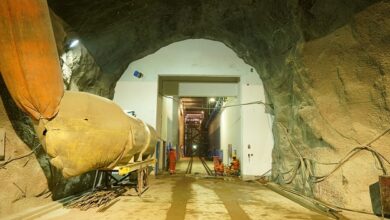
By Guest Writer
Opinion: Firstly, I want to thank the government for the good work towards tourism sector considering it to be the most enormous potential and a leading forex earner, employer and big contributor to the country’s domestic gross product generating more foreign exchange in Uganda and increasing the tourism sector budget making reference to various media channels and tour agencies that have ranked Uganda top of countries with the most outstanding tourist attractions.
However, the government should consider restoring the degraded part of the Bugoma forest reserve which is threatened by human destructive activities that includes sugarcane plantation, development of urban canters, human encroachment, poaching/hunting, illegal harvesting of local herbs, logging, charcoal burning and timber cutting among others.
It is noted that the permanent rivers that used to flow within the Reserve-River Rwemiseke and River Hohwa are now seasonal due to the high rate of deforestation and charcoal burning.
Bugoma forest reserve is 155 miles (250km) long, northwest of Kampala, and covers more than 40,000 hectares. It is the largest remaining block of natural tropical forest along the Albertine rift valley.
It is one of the most important Forest reserves in Uganda and is said to be a home of tourist attractions including 570 or 11.4% of Uganda’s chimpanzees, 225 bird species, a home to over 34 species of mammals, the Uganda Mangabey, bush elephants the Black and white Colobus monkeys, Red tailed monkeys, the Vervet monkeys all live within the Bugoma forest which is found in Kikuube district in Western Uganda.
It is a real biodiversity hotspot that is worth exploring by tourists going on. It hosts an astonishing diversity of flora and fauna species. Sustainable Development Goals (SDGs) 2030 goal 15 highlights protecting, restoring and promoting sustainable use of terrestrial ecosystems, sustainability, combat desertification, halt and reverse land degradation and halt biodiversity loss.
Therefore, the government should work hand in hand with NEMA to protect and restorethe degraded part of Bugoma forest reserve by stopping all destructive activities which includes charcoal burning, illegal harvesting of local herbs, timber cutting and deforestation going on in the forest affecting the reserve in order to protect the environment and conserve the forest.
NEMA should ensure the degraded part of Bugoma forest is turned into a national park to promote tourism since it’s a big contributor to our country.This will enable us successfully achieve our goal 15 as one of Sustainable Development Goals (SDGs) we are targeting to achieve by 2030.
The government should also empower communities around Bugoma on how the forest reserve is important to them by training and educating them in tour guiding, crafts-making, beekeeping, catering and other services which do not degrade the environment and lead to climate change to enable them to participate tourism activities in Bugoma forest without destructing the forest.
The restoration and sustainable use of Bugoma forest will enhance the role of Uganda’s forests and forest resources in sustainable national development addressing global challenges related to climate change and loss of biodiversity hence promoting tourism.
The author is Olive Atuhaire, Research Associate.
Disclaimer: As UG Reports Media LTD, we welcome any opinion from anyone if it’s constructive for the development of Uganda. All the expressions and opinions in this write-up are not those of UG Reports Media Ltd. but of the author of the article.
Would you like to share your opinion with us? Please send it to this email: theugreports@gmail.com.







While I appreciate your concern for the environment, it is crucial to clarify that the responsibility for forest management lies within the purview of National Forestry Authority (NFA), not NEMA. Focusing on the right agency ensures a very effective and specialized approach to restoration of degraded forests.Let’s channel our efforts to where they are most impactful for sustainable forest management.
While I appreciate your concern for the environment, it’s crucial to clarify that the responsibility for forest management lies within the purview of the National Forestry Authority, not the National Environmental Management Authority. Focusing on the right agency ensures a more effective and specialized approach to the restoration of degraded forests. Let’s channel our efforts where they are most impactful for sustainable forestry practices.0